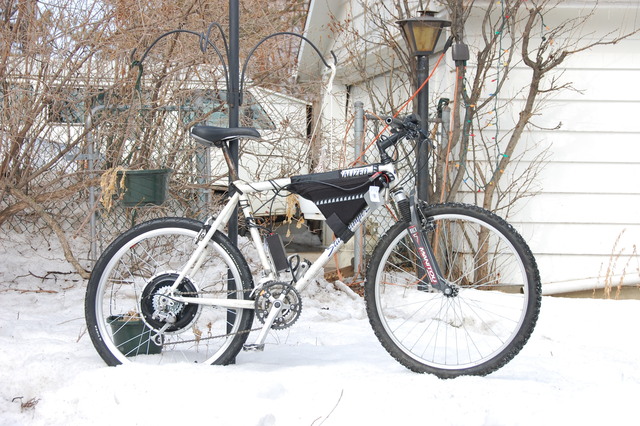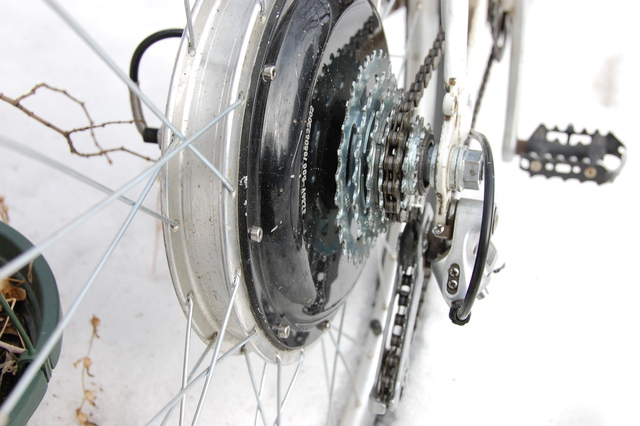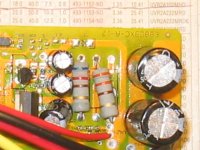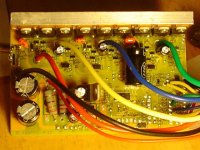I built an eBike with the following parts:
Nine Continent 2809 rear hub
Crystalyte 30A 72V pedal first
Cycleanalyst
NiCd 8Ah, 1 or 2x 36V
All parts from ebikes.ca
built on a '94 Spezialized Stumpjumper hardtail MTB
Weight 32Kg w. 2x36V battery packs.
Some notes:
I needed a small spacer on the axle (freewheel side) to fit a 7sp freewheel.
Increased dropout spacing from 135mm to 145mm using 2x4 method on SheldonBrown.org
Rebuilt wheel with spokes threaded inside-out on freewheel side to allow more dishing, see image.
Achieved centered rim by dishing 2/3 towards freewheel side.
Performance (on the flats): 25km/h @180-200W at 36V, 45-50km/h @800-1000W at 72V
Peak power: 1.8kW going uphill.
Batteries in frame triangle and rear hub motor gives good weight balance. It will take me a while to get used to the handling with the extra weight. Otherwise it rides well, and feels stable at speed. Frame is very nice. Light CrMo, good geometyry to fit batteries, and brazeons for panniers and fenders. Fork is a bit floppy. Probably worn. It is however not so easy to find a good suspension fork for a 1" steerer tube nowdays.
Sometime later I will clean up the cabling, and make a custom bag fitting both 36V batteries and the controller, then transfer rack, panniers and fenders from my current commuter bike. For now I strapped 2nd battery (not shown in image) to top tube behind first.
Martin (In Edmonton, AB)


Nine Continent 2809 rear hub
Crystalyte 30A 72V pedal first
Cycleanalyst
NiCd 8Ah, 1 or 2x 36V
All parts from ebikes.ca
built on a '94 Spezialized Stumpjumper hardtail MTB
Weight 32Kg w. 2x36V battery packs.
Some notes:
I needed a small spacer on the axle (freewheel side) to fit a 7sp freewheel.
Increased dropout spacing from 135mm to 145mm using 2x4 method on SheldonBrown.org
Rebuilt wheel with spokes threaded inside-out on freewheel side to allow more dishing, see image.
Achieved centered rim by dishing 2/3 towards freewheel side.
Performance (on the flats): 25km/h @180-200W at 36V, 45-50km/h @800-1000W at 72V
Peak power: 1.8kW going uphill.
Batteries in frame triangle and rear hub motor gives good weight balance. It will take me a while to get used to the handling with the extra weight. Otherwise it rides well, and feels stable at speed. Frame is very nice. Light CrMo, good geometyry to fit batteries, and brazeons for panniers and fenders. Fork is a bit floppy. Probably worn. It is however not so easy to find a good suspension fork for a 1" steerer tube nowdays.
Sometime later I will clean up the cabling, and make a custom bag fitting both 36V batteries and the controller, then transfer rack, panniers and fenders from my current commuter bike. For now I strapped 2nd battery (not shown in image) to top tube behind first.
Martin (In Edmonton, AB)



